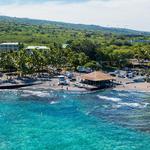
Things To Do
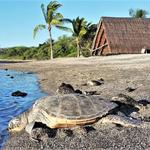
Kaloko-Honokohau National Historical Park
Established in the 1978 to preserve and interpret Hawaiian history and traditions, this park protects the site of an ancient Hawaiian settlement, the coastal portions of five different ahupua‘a (traditional Hawaiian land divisions extending from the mountains into the sea), and a great concentration and variety of tangible and intangible resources that attest to the Hawaiians’ presence on the land. This park features historic fish ponds and traps, petroglyphs, and a beach popular with honu, green sea turtles. Entrance is free.
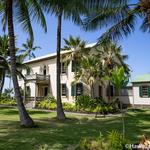
Hulihe‘e Palace
History museum in Kona, $16 for self guided tours and $22 for docent led tours, student and military discounts available. Once a summer vacation home for Hawaiian royalty, today Hulihe‘e Palace is a museum showcasing Victorian artifacts from the era of King Kalākaua and Queen Kapi‘olani.
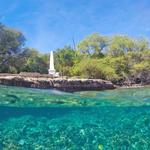
Kealakekua Bay
There are snorkel tours and kayak rentals available to go onto the bay, as well as some hiking. This is where James Cook landed in 1778, the first contact between Hawaiians and Europeans, and where he was killed the following year in a skirmish after attempting to kidnap and ransom Kalaniʻōpuʻu, king of Hawaii.
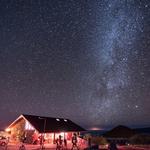
Mauna Kea Visitor Information Station
Maunakea, a dormant volcano, is the highest point in Hawai'i and a sacred mountain in Hawaiian tradition. If you would like to summit Mauna Kea you are required to have 4 wheel drive. You do not need 4WD to get to the visitors center, and the center is an excellent star gazing location. Here are the permitted tour companies that will take you up to the summit: https://hilo.hawaii.edu/maunakea/visitor-information/commercial-tours
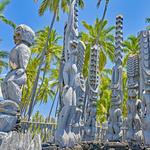
Pu'uhonua O Honaunau National Historical Park
This historical park preserves the site where, up until the early 19th century, Hawaiians who broke a kapu (one of the ancient laws) could avoid certain death by fleeing to this place of refuge or puʻuhonua. The offender would be absolved by a priest and freed to leave. Defeated warriors and non-combatants could also find refuge here during times of battle. The park today offers hiking, historic sites, and live cultural demonstrations. The entrance fee is $20 per car.
Beaches!
Too many beaches to list all individually, so this is a really nicely done guide.
Manini'owali Beach (Kua Bay)
One of the best sandy beaches on the island, known for blue water and waves that aren't too big.
Amy Greenwell Ethnobotanical Garden
Amy Greenwell Ethnobotanical Garden is a vibrant 15-acre biocultural kīpuka – a protected remnant of land with plants and agricultural features from an earlier era. Located in South Kona, the Garden, which is also an officially designated community forest, showcases over 200 species of native and Polynesian-introduced plants that predate the arrival of Captain Cook in 1778.
Mountain Thunder Coffee Plantation
Free guided educational tours are available from 9:30 AM until 3:30 PM seven days a week. Family groups do not need any advance reservations. Tours generally take about 20 minutes.
Greenwell Farms
Complimentary guided tours of the coffee farm and processing facilities daily from 9:00am-3:00pm. From seed to cup, guests are given an inside look at the history, farming and processing of coffee before sampling Greenwell Farms 100% Kona Coffee. Tours walk over unpaved, uneven terrain, with mild upslope and downslope. Unescorted viewing of the farm is prohibited. Tours last 45-60 minutes and coffee is available for sampling both before and after the tour.
The Coffee Shack
Cafe with awesome views. Beat the line and go early, but the line will move quickly.
Kona Brewing Co.
Tours of the Kona Brewery available every day at 1:30, 3, 4:30, and 6, book online in advance. Tours are $20 per person, last an hour, and include samples for 21+ guests.
